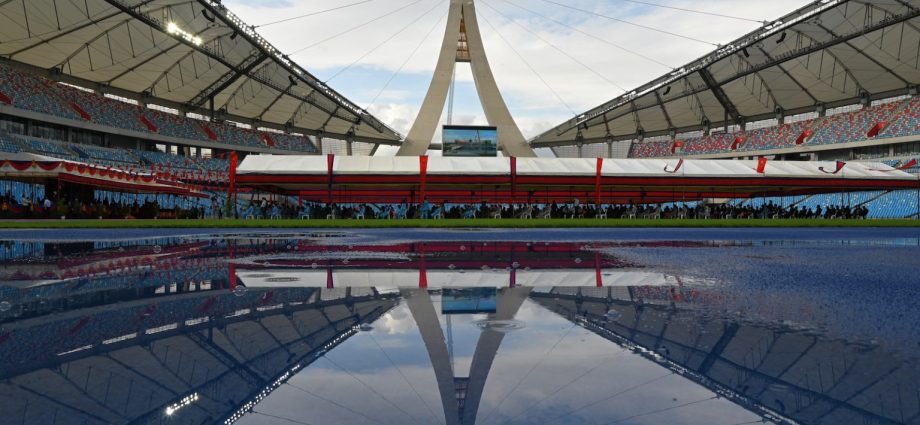China is Cambodia’s largest bilateral donor, lender, investor and trading partner. About a quarter of Cambodia’s total trade, a third of aid and two-fifths of foreign direct investment (FDI) and external debt involves China. Although Sino-Cambodian diplomatic and economic relations date back centuries, they have grown sharply over recent decades.
Economic relations have been strengthened by Cambodia’s active participation in the Belt and Road Initiative (BRI). Cambodia has been a vocal and enthusiastic proponent of the BRI since its inception in 2013.
In Cambodia, the BRI focuses mainly on loans to develop physical transport infrastructure, although it has also been indirectly associated with the development and transformation of the port city of Sihanoukville.
There are also investments in agriculture, energy and light manufacturing.
Participation in the BRI has costs and benefits. As a Least Developed Country aspiring to achieve upper middle-income status by 2030, Cambodia has embraced the BRI as an important instrument for addressing infrastructure deficits and reducing trade and transport costs.
The BRI has also supported the development of the power sector and agricultural diversification. This has raised productivity and led to trade expansion and high economic growth without compromising debt sustainability.
Rapid economic growth has increased wealth inequality but also raised overall living standards and produced sharp reductions in poverty. Between 2009 and 2019, poverty incidence (US$1 per day) almost halved from about 34% to 18%. These achievements derive from multiple factors but the BRI’s contribution cannot be denied.
The government has not undertaken a quantitative cost–benefit analysis of the BRI in Cambodia. The presence of BRI projects alongside massive socioeconomic gains suggests that the country has derived net benefit from the BRI.
There are also no concerns relating to “debt trap diplomacy” as debt levels remain below 40% of GDP. Still, there are risks associated with increasing reliance on just one country for economic and non-economic needs.
The BRI provided the transport and related infrastructure that facilitated the transformation of Sihanoukville from a sleepy, beachside resort town to a bustling entertainment center focused on gambling. The spill-over benefits of this rapid development to the local communities appear limited, while there is growing evidence of a rise in the cost of living, crime, corruption and various forms of inequality.

While the BRI was not directly involved in transforming Sihanoukville in this way, it did enable the conditions for its development. The real and perceived costs of these rapid transformations have caused dislocation and displacement among local communities.
Experts have concerns about the environmental and resettlement effects of BRI projects. The second BRI Forum in 2019 committed to mitigating problems through greater community consultation and stakeholder participation. It is still too early to tell if this consultation is really happening.
The forum also resolved to multilateralize the BRI by expanding the participation of regional, albeit still China-based, institutions. In Cambodia, this is occurring through a gradual shift in the financing of projects from Chinese state-owned banks and corporations — whose operations are sometimes opaque — to the Asian Infrastructure Investment Bank (AIIB), a multilateral development institution.
The AIIB’s role is set to increase rapidly and raise overall transparency, including contractual obligations.
But the extent to which AIIB’s involvement will also raise environmental standards and other safeguards remains unclear. This is because the AIIB adopts national environmental and other standards and policies — which may fall short of global benchmarks.
AIIB oversight of the implementation of environmental standards or resettlement policies may also involve national authorities rather than an independent party, which could be problematic.
How can Cambodia ensure that future projects are net positive?
The Committee for the Development of Cambodia reviews FDI proposals as part of the process of obtaining Qualified Investment Project (QIP) status and securing fiscal incentives. While some of the criteria used in determining QIP status involve assessing potential benefits to the local economy, the analysis lacks a comprehensive cost-benefit framework.
This is also true of the new Law on Investment adopted in 2021, which is mainly designed to facilitate FDI. Both the QIP and the Law on Investment ignore macroeconomic issues such as debt or investment sustainability and do not attempt to measure broader spill-over effects on the economy.

Cambodia needs a formal framework to assess the potential costs and benefits of all project proposals as part of a conventional approval process.
Cambodia could consider setting up a new Projects Review Board, which could operate as a non-statutory body with inter-ministerial and multi-stakeholder representation, to assess individual proposals in a purely advisory capacity to the government.
Technically competent staff who are capable of undertaking comprehensive cost-benefit analysis should support this project. A properly functioning Projects Review Board could help avoid the kinds of BRI projects that have left neighboring Laos in severe debt distress.
A transitional economy like Cambodia should be selective and strategic in its choice of projects if it is to grow in a sustainable and inclusive manner. It has done well so far but needs an independent assessment mechanism to ensure its success continues.
Jayant Menon is Senior Fellow at the ISEAS-Yusof Ishak Institute.
This article was originally published by East Asia Forum and is republished under a Creative Commons license.

